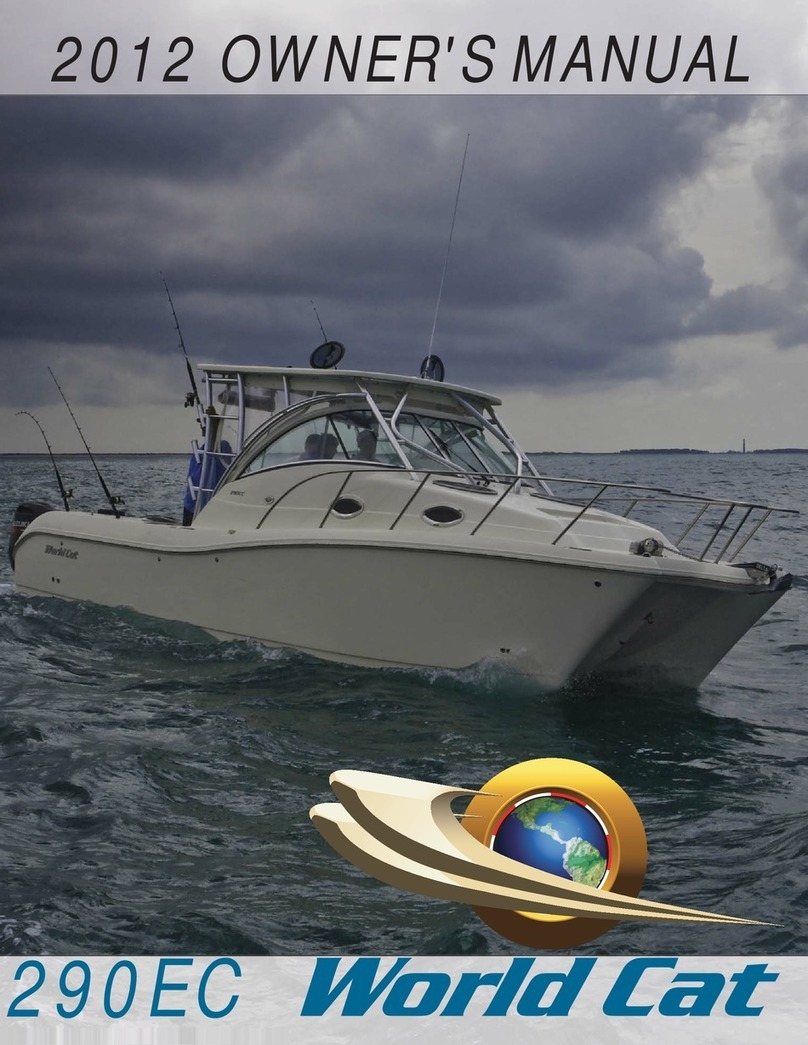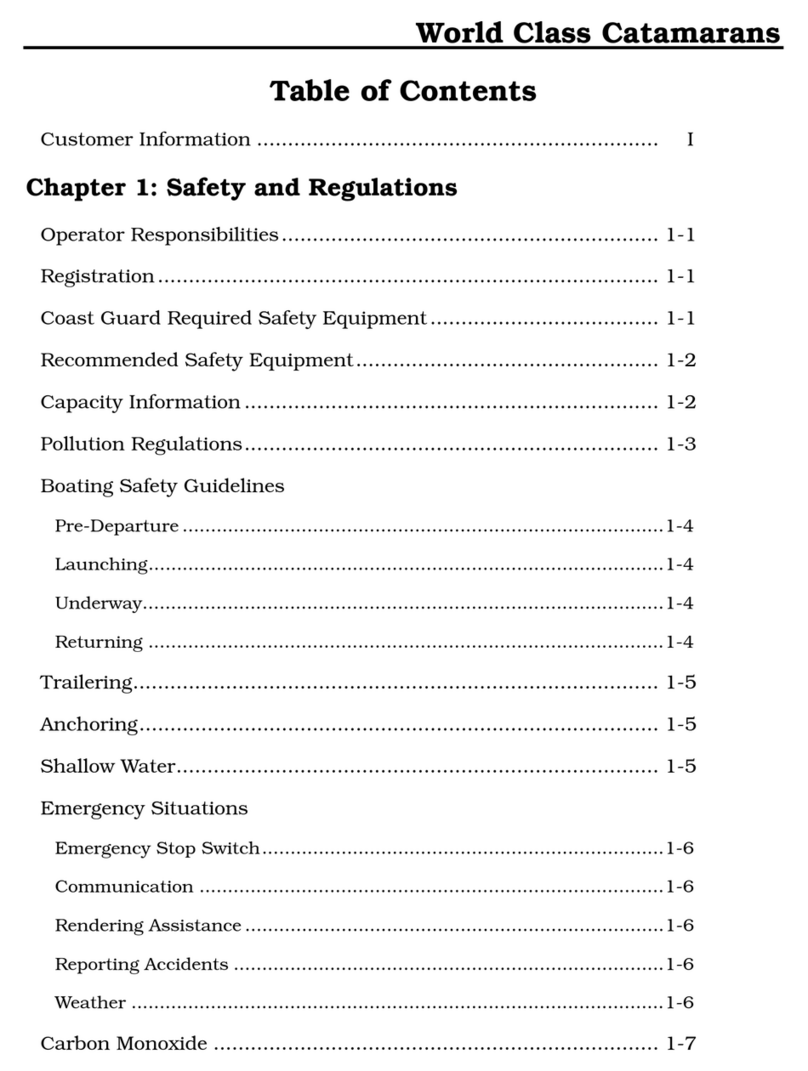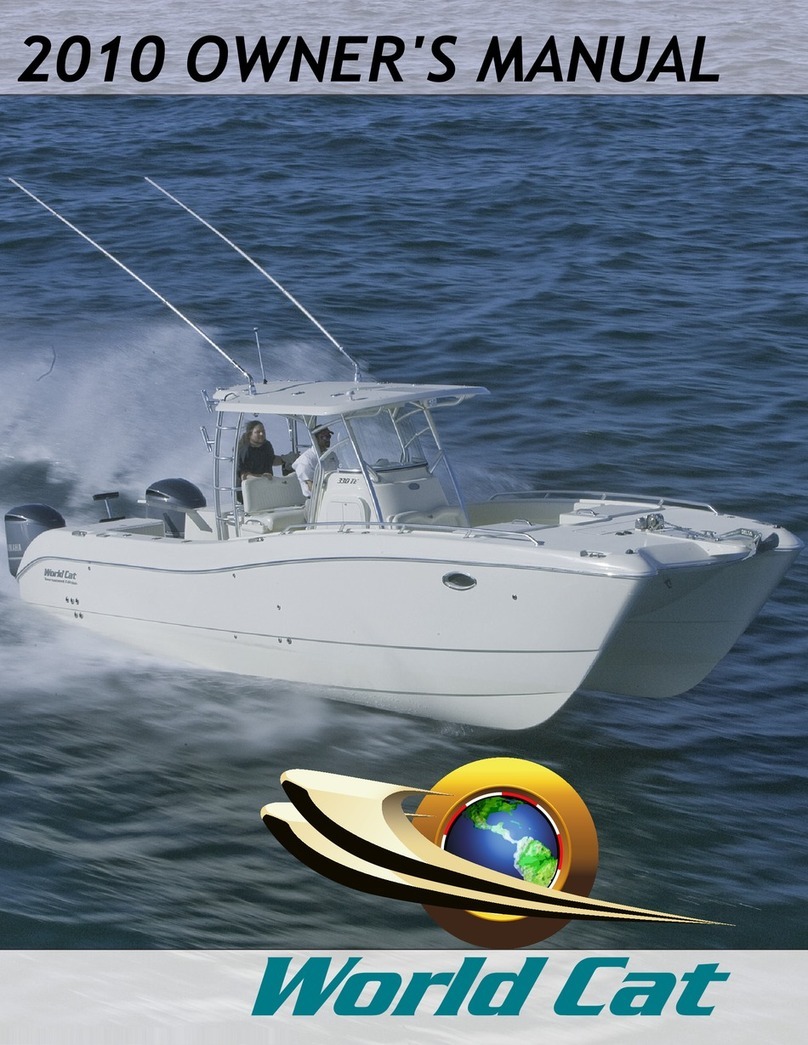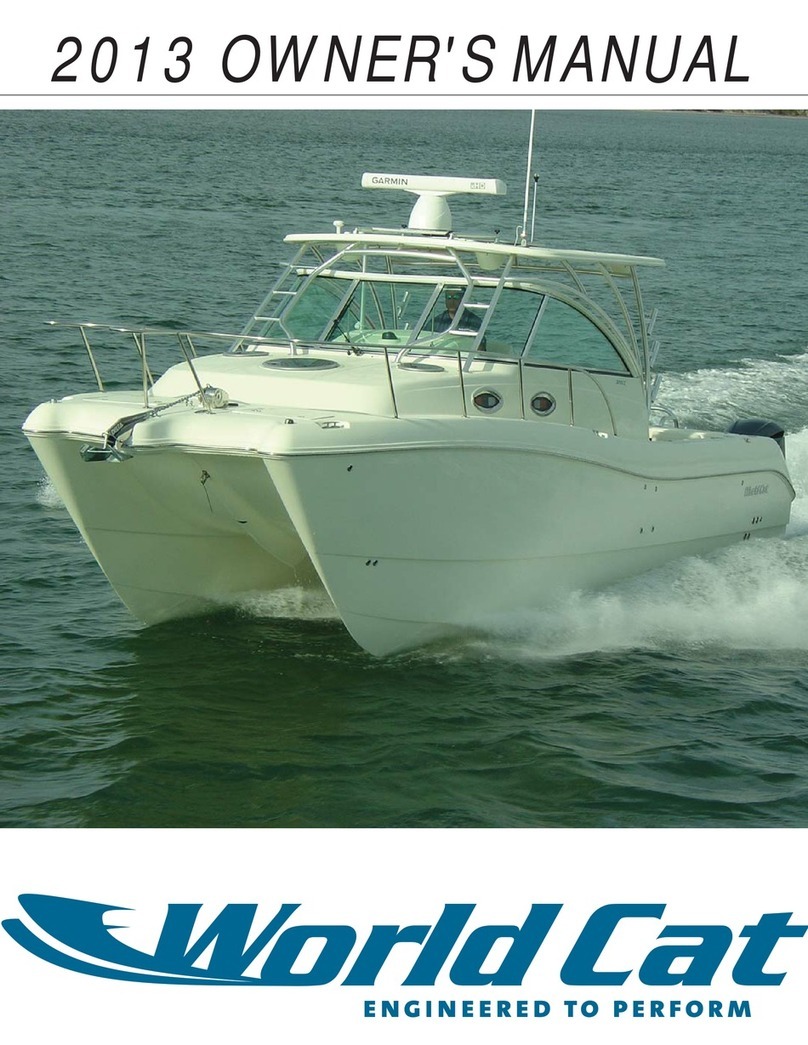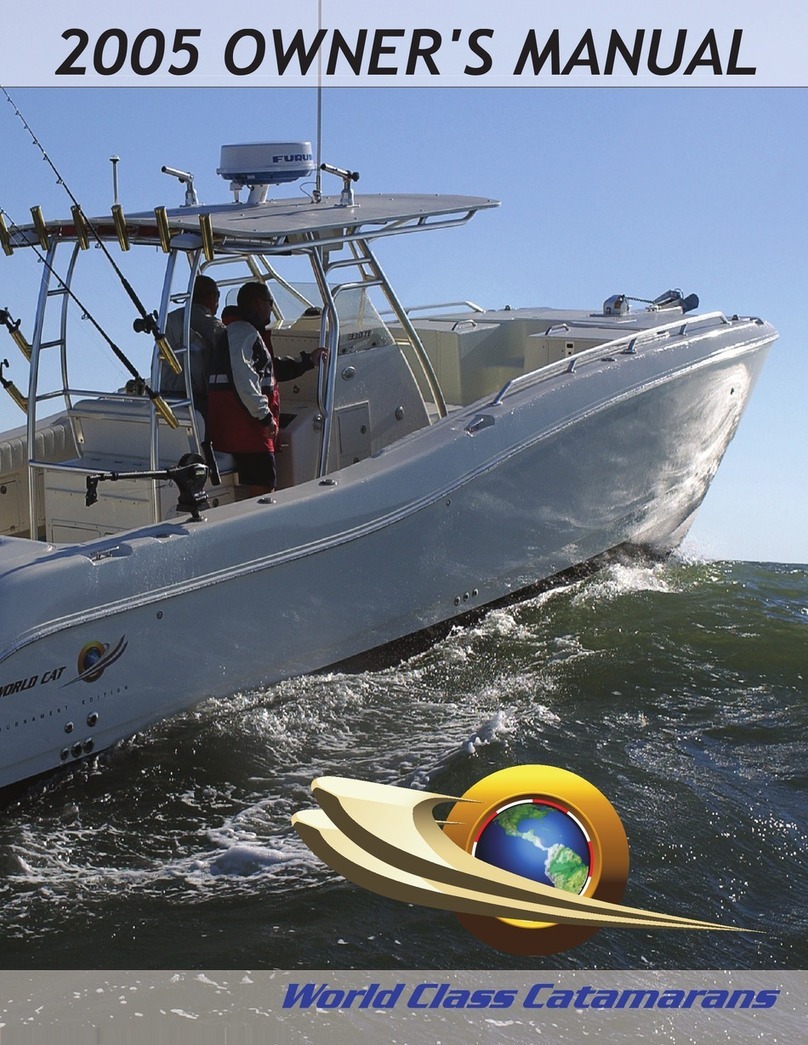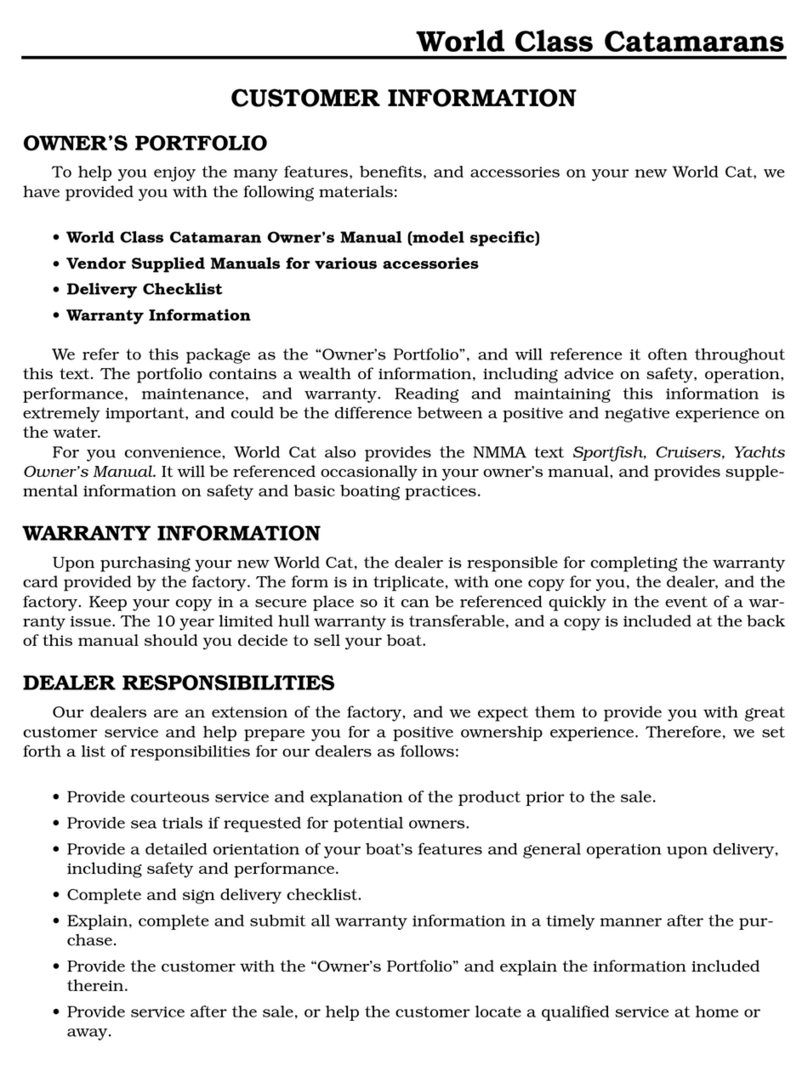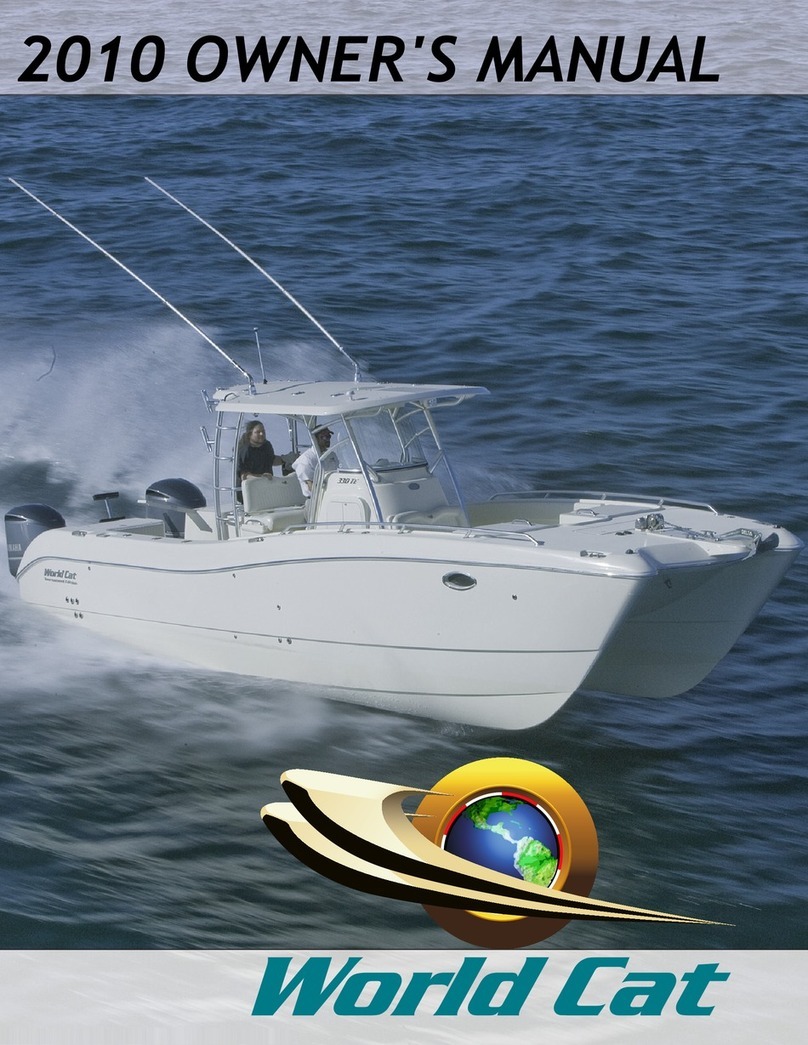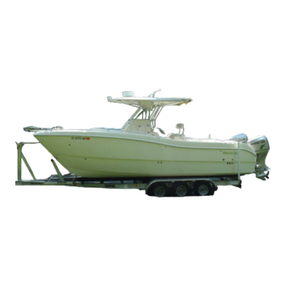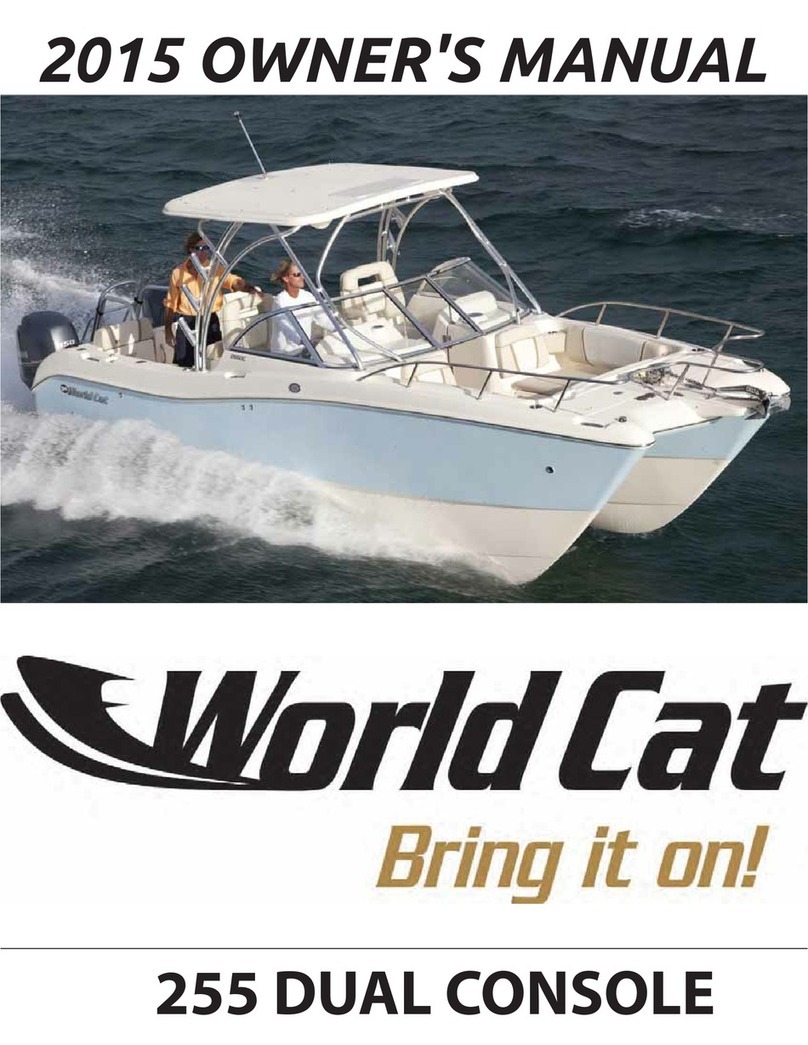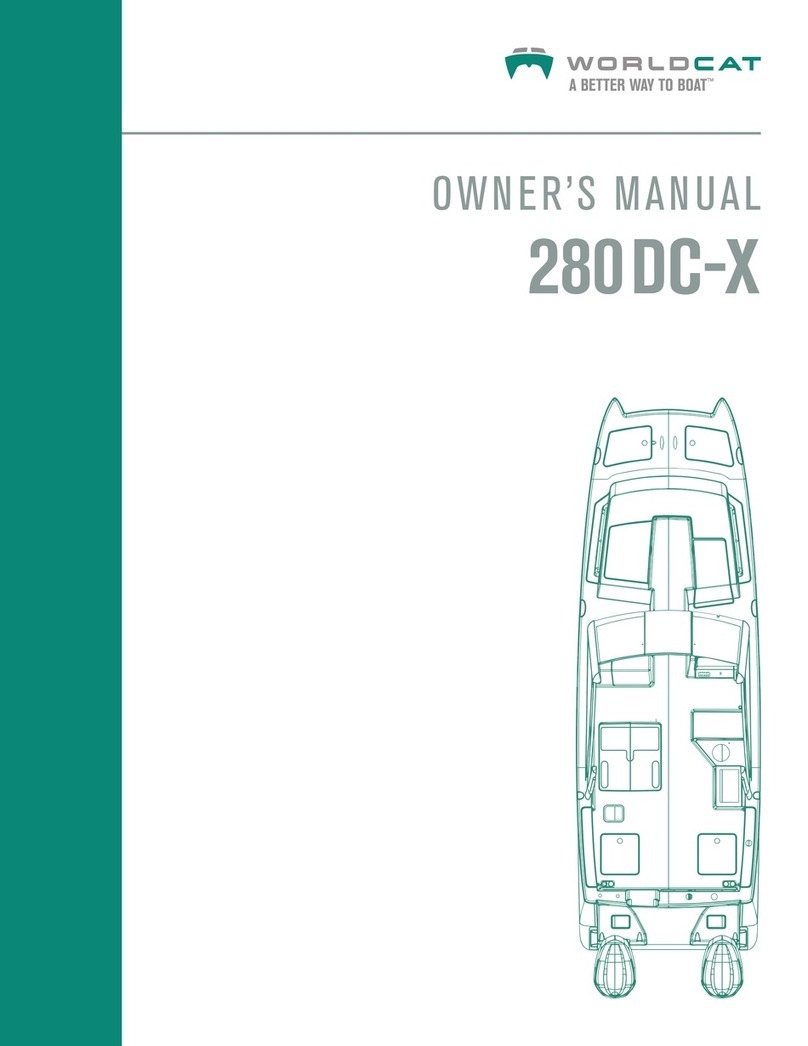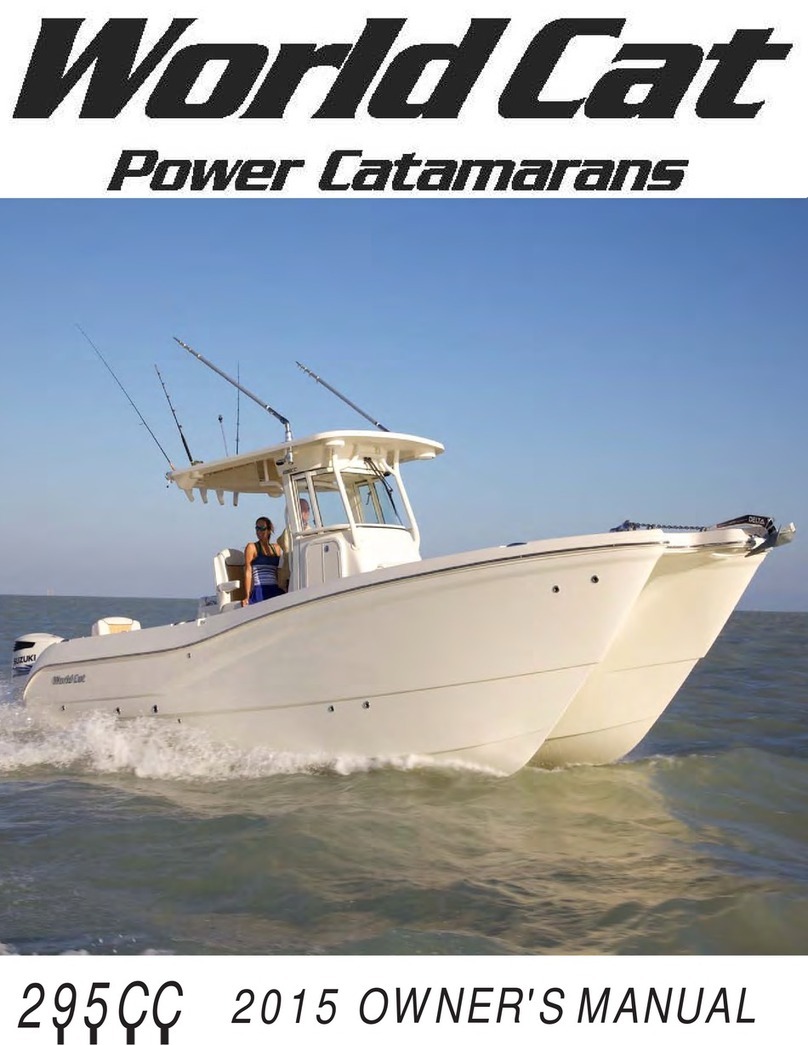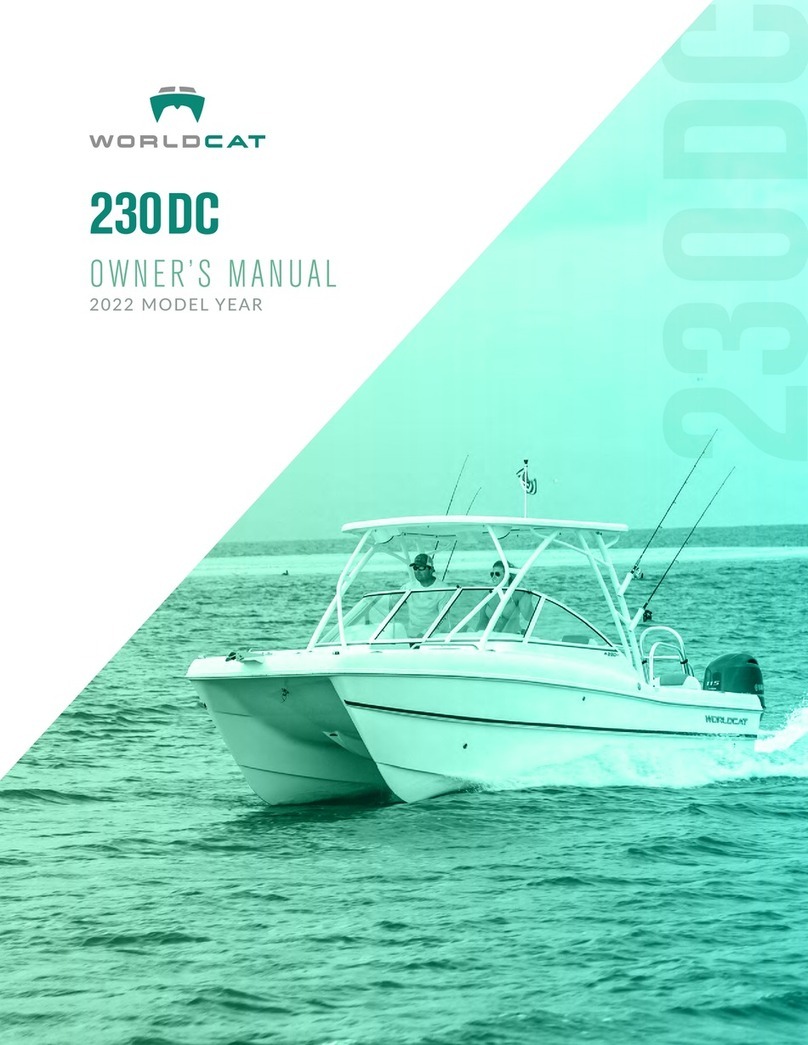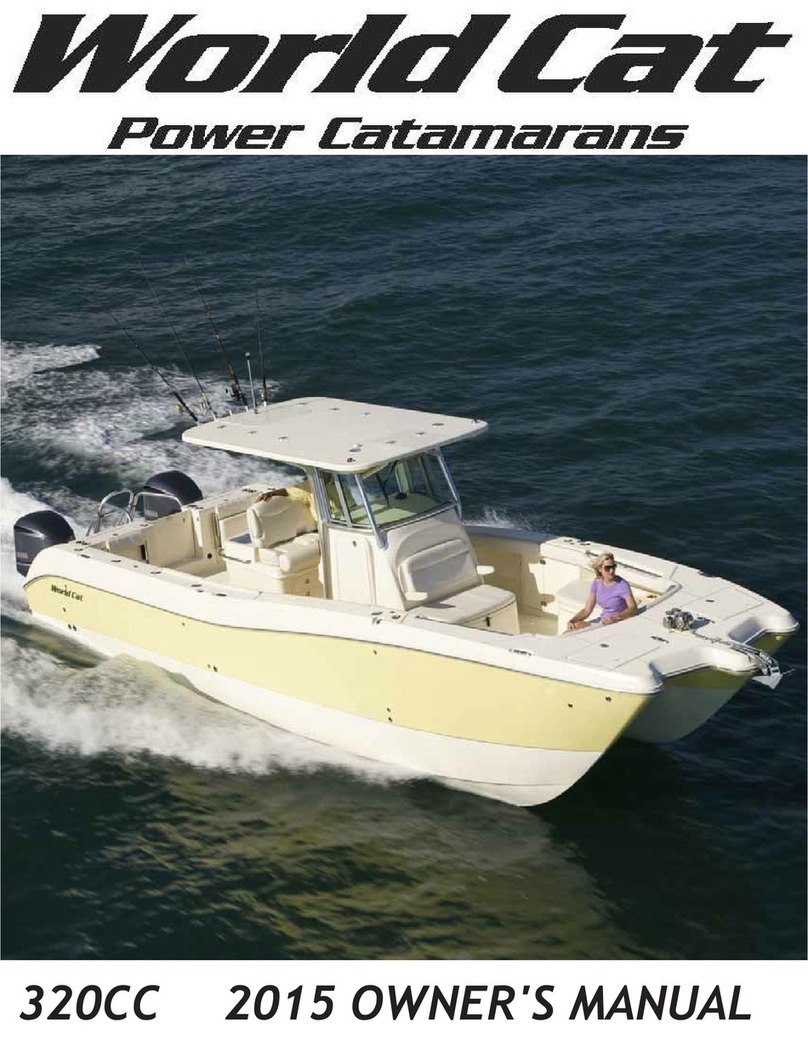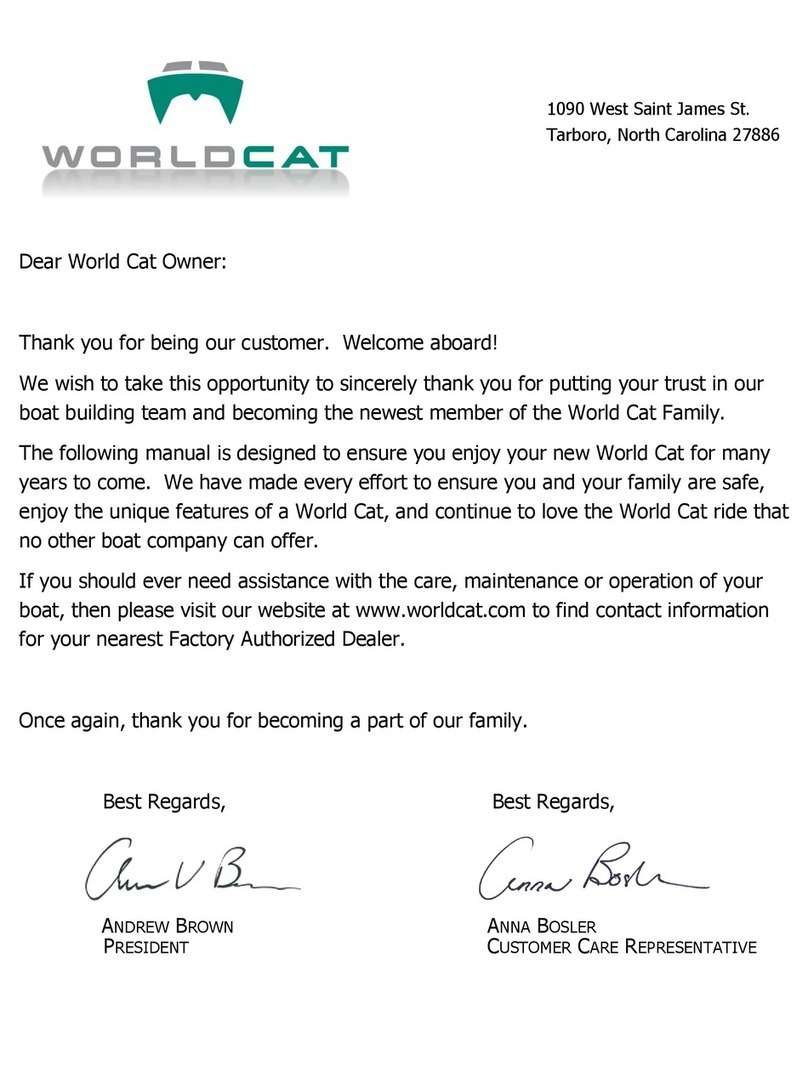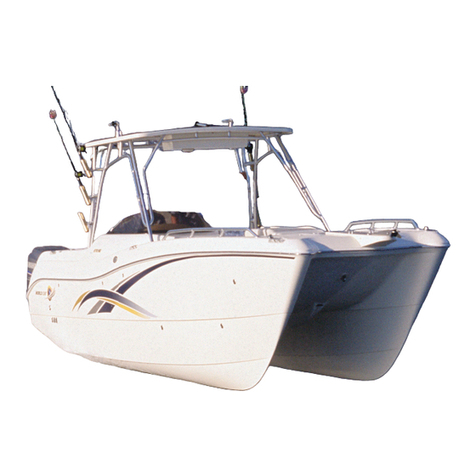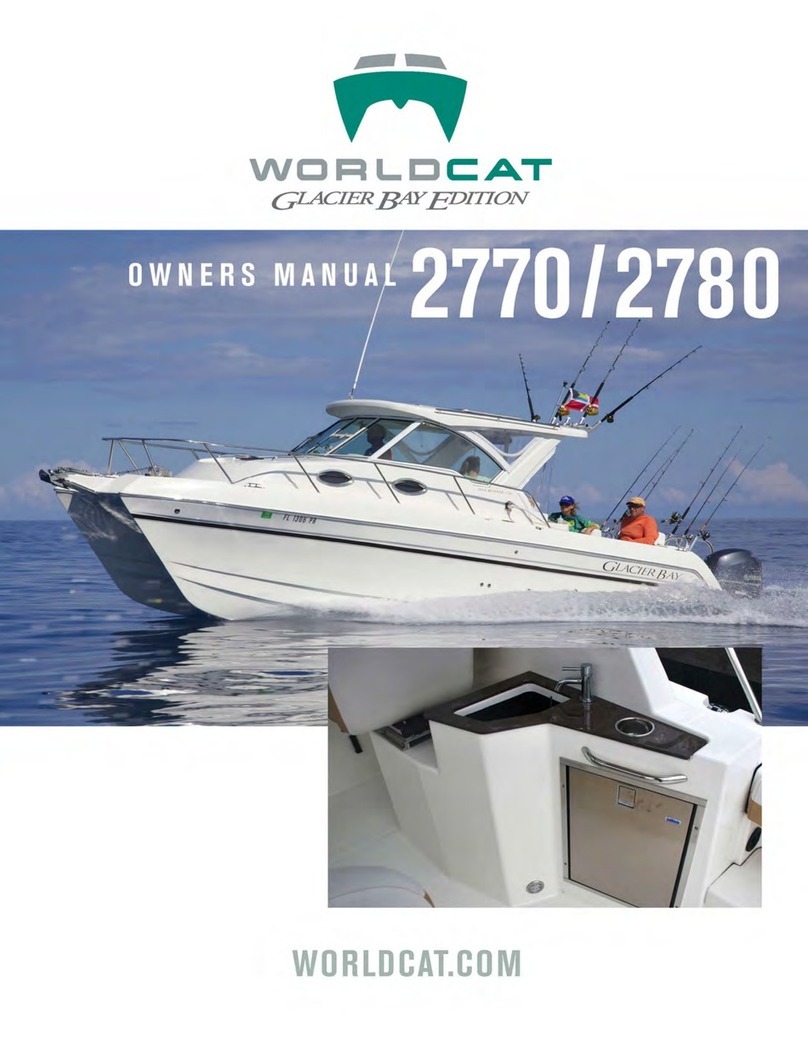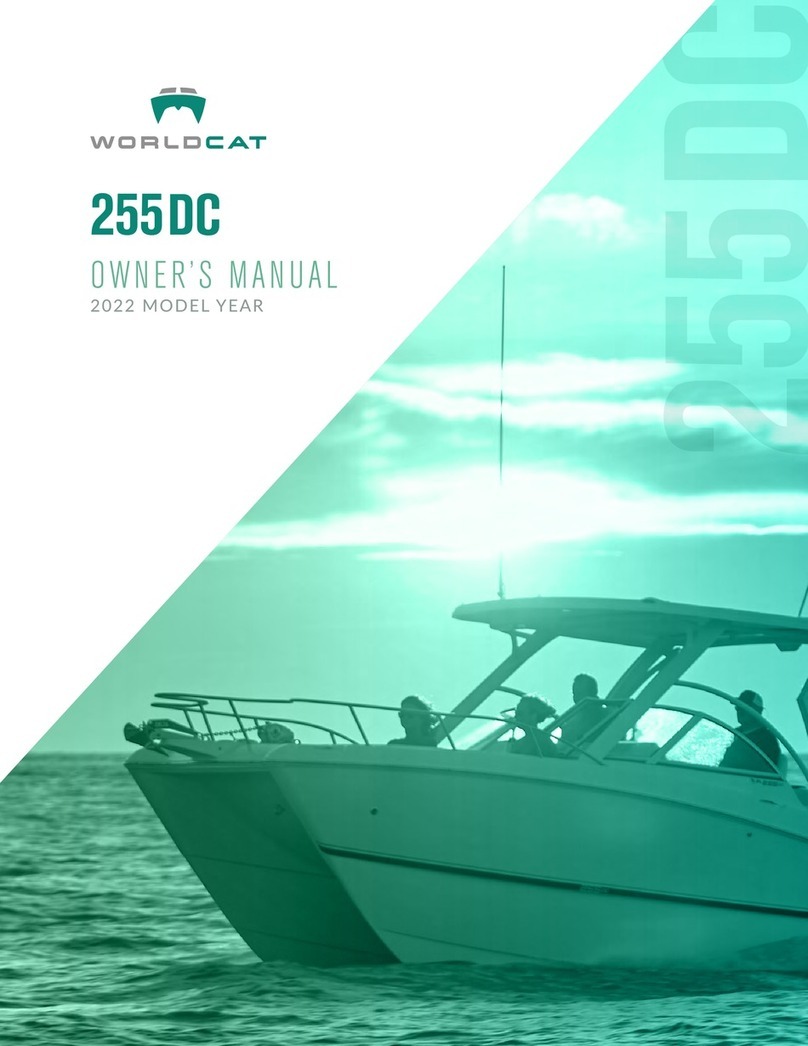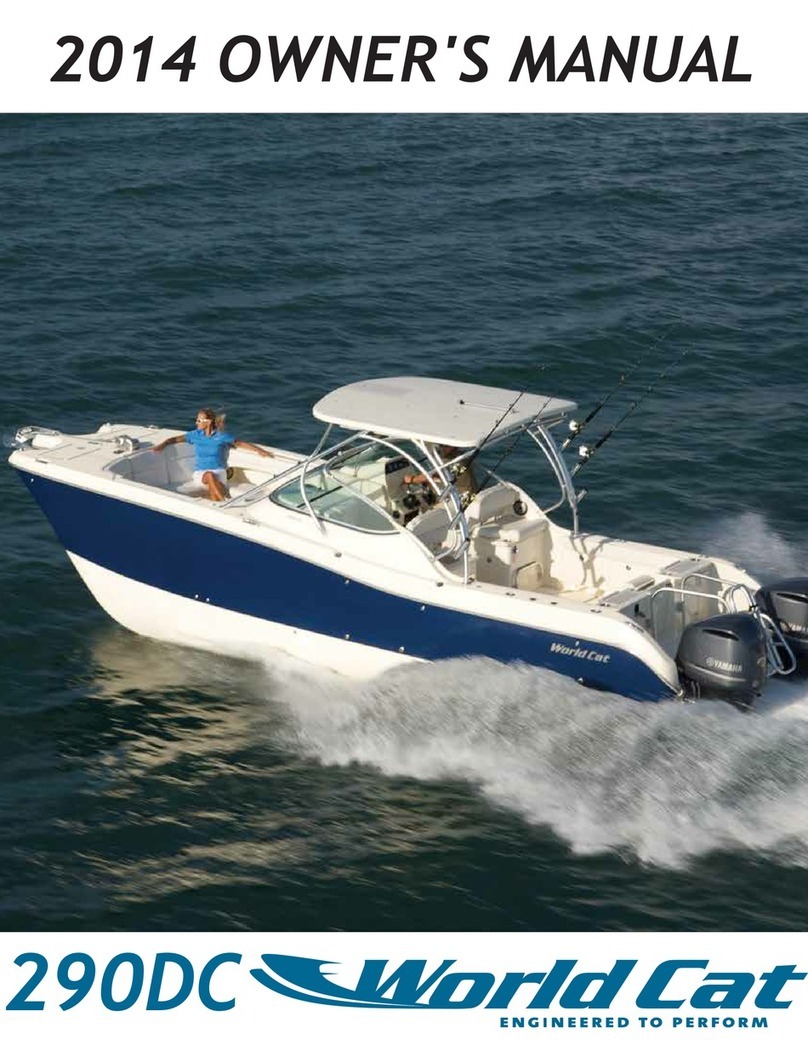
wee
Group, Inc.
World Cat Limited Warranty
WARRANTY COVERAGE
]
]
]
]
WCC Group, Inc. (hereinafter referred to as the Manufacturer) warrants to the original purchaser, or approved transferee, that the boat, and all
COf!'po"e~ts a~d accessories rroanufact~red by the Manufacturer shall be free from defects in materials and wori<manship for a period of one
(1)
year frcm
the date of original purchase, and further, that the hull and deck will be free from structural defects caused by faulty materials or workmanship for a period
of five (5) years from the date of original purchase from the Manufaclure~s authorized dealer. It is further warranted thai the gelcoat surface of the hull
bottom will be free from blistering that may occur as a result of defects in materials and workmanship for a period of five (5) years from the date of original
purchase from an authorized dealer, provided that the gelcoat surface has not been altered in any way such as sanding or sandblasting, or the application
of a coating other than a standard type of anti-fouling paint and primer coating, Which will void this warranty provision. Products that are proven to be
defective within the applicable warranty period, when used and maintained according to the manufaclure~s instructions, will be repaired or replaced by the
1
Manufacturer, or one of its authorized dealers, at the option of the Manufacturer, and only after prior authorization of the Manufacturer. All warranty
claims in excess of
$
200.00 may require substantiation prior to authorization, at the option of the Manufacturer. This warranty may be transferred by
following the procedures in the Owne~s Manual. This warranty provides specifi6 legal rights; other rights may be applicable according to local statutes.
LIMITATIONS
1
1
Warranty coverage does not extend to any Purchaser other than the original purchaser from the Manufacture~s auL'lorized dealer, or an approved
L'1lnsferee. Warranty coverage does not include:
1.
Outboard motors, propellers, balleries, anti-fouling paint or any component or accessory not manufactured by the Manufacturer. Reier to the
Owne~s Manual for specific warranty details on components and accessories.
2. Gelcoat cracking, crazing or discoloration.
J
3. Damage caused by misuse or a~use, racing, storm damage, grounding, commercial use of the boat, or norma! dete~oration.
4. Upholstery damage or deterioration.
5. Damage or deterioration resulting from environmental conditions.
1
6. MY
repairs, adjustments or modifications to a boat or any of its components made by anyone ether than an employee of WCC Group, Inc.
7. Damage which has occumed as a result of the boat being operated as a demonstrator and/or displayed for sale.
8. Damage or deterioration of the boat or its components due to altachment
01
hardware or other componenls by anyone other than an employee of the
Manufacturer.
1
Repair or replacemenl, at the option
01
the Manufacturer, is the exclusive remedy under this warranty; in no event shall the Manufacturer be liable for any
consequential or incidental damages, including, but not limited
10,
telephone. food, lodging, or charges for transportation or hauling out in order
(0
effect
J
warranty repair, unless provided for under local statute, in which case these exclusions may not be applicable. TO THE EXTENT ALLOWED 8Y LAW,
ANY AND ALL IMPLIED WARRANTIES, INCLUDING THE IMPLIED WARRANTY OF MERCHANTIBILITY AND ANY APPLICABLE IMPLIED
WARRANTY OF FITNESS FOR A PARTICULAR PURPOSE ARE LIMiTED TO THE DURATION OF THIS WARRANTY, UNLESS PRESCRI8ED 8Y
LOCAL STATUTE. The rights and obligations of the Perohaser and the Manufacturer under this written warranty rray not be varied or modined.
J
RESPONSIBILITY OF THE PURCHASER
J
1.
This warranty extends ONLY TO THE ORIGINAL PURCHASER OR AN APPROVED TRANSFEREE ON THE CONDITION the cwner completes and
maiis the warranty card to WCC Group. Inc., Warranty Registralion, 801 Staton Rd., Greenville. NC 27834 wilhin fifteen (15) days after laking
delivery of the boat.
2. The original purchaser or approved transferee must give WRITTEN NOTICE of the claimed defecl to an authorized dealer within
I
fifteen (15) days after first detecting the claimed defect. It must appear to the ManL1acturer's reasonable satisfaction that the c:aimed defect is
covered by warranty. Purchaser must give WRITTEN NOTICE to WCC Group, Inc., Warranty Claims, of any failure by an autho,;zed
dealer to respond
10
a claimed defect within fifteen (15) days after first notification te the autherized dealer.
3. The boat, including any claimed defective part, MUST be relumed to an aulhorized dealer for the Manufacturer (or elsew~ere, as directed by the
I
Manufacturer) withir the warranty period for inspection and warranty service. ALL EXPENSES incurred in retuming the ~oat to the authorized
dealer and back to t.'ceowner will be paid by the owner.
THIS FORM MUST BE COMPLETED AND SIGNED AT THE TIME OF DELIVERY AND THE APPROPRIATE COPIES RETURNED IMMEDIATELY TO
FACILITATE THE HANDLING OF ANY CLAIM THAT MAY ARISE UNDER THE TERMS OF THIS LIMITED WARRANTY AND TO COMPLY WITH THE
FEDERAl BOAT!NG SAFETY ACT OF 1971.
WCC Group, Inc. reserves the right to modify its products t.~rough changes in design and/or material without no lice and without obligation to the owners
01
similar and/or same models of prior manufacture. We may be contacted at WCC Group. Inc., Cuslomer Service, 801 Staton Rd., Greenville, NC
27834.
-1-
https://www.boat-manuals.com/world-cat/

